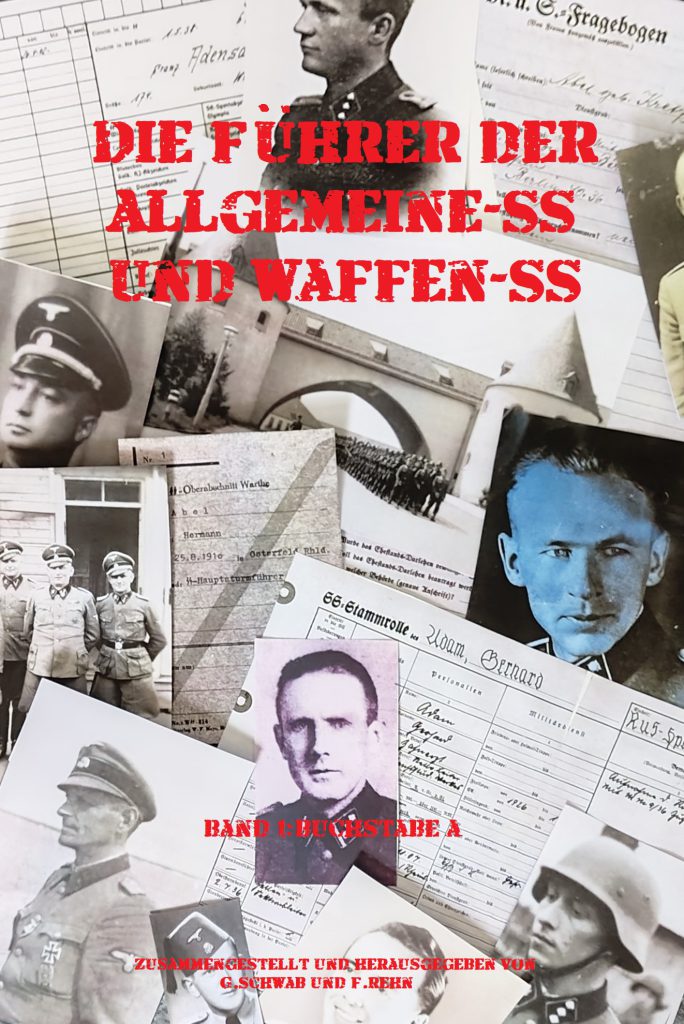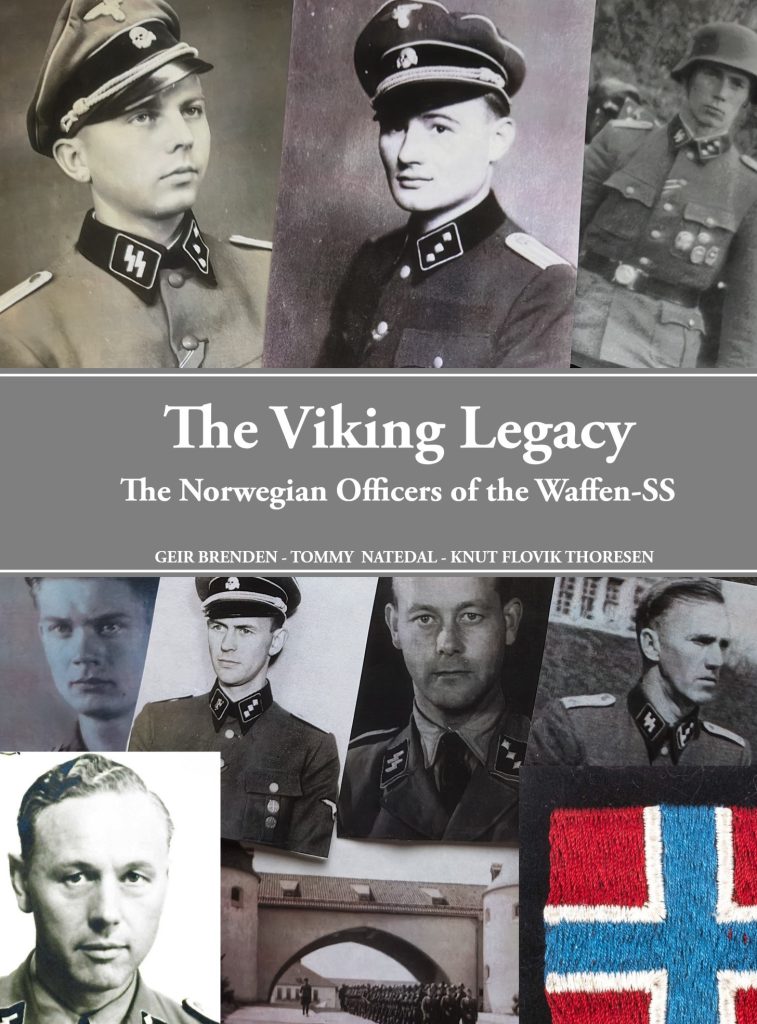Published: 17 April 2010
Tom Houlihan is a deputy sheriff, currently serving in the Corrections Division. After six years in the US Navy, he enlisted in the U.S. Marine Corps, retiring from that organization as a Staff Sergeant in 1999.
He has no formal training either in writing or historical research. Most of his projects come out of an attempt to do things differently from what has gone before.
In addition to everything else, Tom also makes maps for books and websites as can be seen on www.mapsatwar.us
The interview took place in January 2010.
AHF: How do you select topics for books?
T. Houlihan: So far, I’ve selected topics for two books. Kriegssprache was selected by default, to be explained further along. The book I’m supposed to be working on was actually selected by someone else. I was developing an idea to write a book on the Winter and Continuation Wars for the American audience. The late Kit Bonn suggested I tighten my focus and write about 6.SS-Nord, since I was already in contact with one veteran, having done the maps for Black Edelweiss.
AHF: How did you get contact to publishers when starting out?
T. Houlihan: For Kriegssprache, I approached Aberjona Press, as I’ve worked with them for so long. After discussing the plan with Patti, I realized that I would have a rough time convincing any of the major publishing houses, so I decided to self-publish. That also left me with much more control over the finished product.
AHF: Have you got any specific training (history degree, writing courses)?
T. Houlihan: None whatsoever! I took one college level military history class back in 1980. I’ve had a couple of basic writing classes in college. In reality, none of them were necessary for Kriegissprache. When I finally sit down to writing the Nord book, I know that I will have to keep a tight rein on my prosaic writing style, though!
AHF: Which archives have you used and how do you find working in them?
T. Houlihan: For the Nord book, so far I’ve only dealt with NARA. Aside from finding what I wanted in their catalog, I’ve had no trouble working with them.
AHF: What in particular needs to be kept in mind in archival research?
T. Houlihan: One thing I’ve found so far is that if you are looking for particular information, you need to think of different ways to look for it. Specifically, I was looking through the microfilm I have for vehicle information, as used by Nord. When I couldn’t find it, it was recommended that I look in the Korps and Armee records, as those reports would have been submitted by the Division.
Also, look in the enemy records. I was sent some reports from a friend that were from US Army records, with prisoner interviews. That opened up a whole new approach, as it gives me more more information to shoot for.
AHF: How do you as an author view the Internet, both as a source and as a competitor to books?
T. Houlihan: For the work I’ve done so far, I like the variety of sources on the Internet. The hard part is winnowing through all the information to get the actual facts. Ultimately, I think there may be a way to make the computer as user friendly as far as books, but I seriously doubt that books will ever truly go away.
AHF: Have you tried to contact veterans and interview them – if so, how did this work out?
T. Houlihan: For me, it worked out beautifully. I was already in touch with a Nord veteran from my work on the Black Edelweis maps.
AHF: What is the key bit of advice you would give to those who want to write a book on military history, especially World War 2?
T. Houlihan: Try to find something that hasn’t already been covered and recovered. Look for a new angle, even if you are doing something that isn’t new. Don’t just do another version of what everyone else is doing.
AHF: What has the greatest challenge for you as a historical researcher been?
T. Houlihan: For me, personally, my biggest problems are time, money, and language abilities. I don’t have enough of any of those three to do what I want to do, the way I want to do it.
AHF: In hindsight, are there any things in your books that you would have done differently?
T. Houlihan: In reference to Kriegssprache, I would have refined my focus on it a little earlier!
AHF: How did you first become interested in military history and what made you choose the topic of your first book?
T. Houlihan: My interest started developing as soon as I was able to read my father’s copy of Trevor N. Dupuy’s Military History of World War II. As mentioned, my first book was entirely accidental. In now way did I set out to do such a thing, but it seems to have worked.
AHF: What is your opinion of the recent rise of interest in the second world war in popular culture?
T. Houlihan: I like it, but I am distressed by the amount of incorrect information being put out. Even programming that claims to be aiming at historical accuracy can be anywhere from off the mark, to dismally incorrect. This disturbs me greatly.
AHF: What effect might it have on the historical research community?
T. Houlihan: If handled properly, this could be quite good. If there are more people researching more areas of the war, then more information should be forthcoming. With luck, over the next few years, some of these newly come to the community will be digging into lost and forgotten archives. In our lifetimes, a lot more questions may well be answered.
AHF: What are your plans for future books?
T. Houlihan: The only one I have planned is for a divisional history of 6.SS-Nord. Beyond that, I have some ideas, but nothing carved in stone just yet.
AHF: Can you live off the proceeds?
T. Houlihan: Would that I could, but that seems rather unlikely.
AHF: You published your book “Kriegssprache” through the self-publishing site Lulu, what are your experiences with publishing a book that way?
T. Houlihan: I had no trouble with it. I determined that I would have some difficulty getting the book published through a conventional printing house, for various reasons. Doing the job through Lulu first of all gave me complete control over the work. Nothing got changed unless I wanted it changed. In a sense, it also gave me a sense of relief in that this work would ‘sink or swim’ on it’s own. If anything was wrong, I had no one to blame but myself, as nobody else did anything on it (besides ideas and suggestions).
Self-publishing gave me the opportunity to push ahead with something I knew was of value, without having to fight the mainstream publishing business to gain entry. While it was a definite ego boost to see my work in printed form, I will also admit that doing everything except the actual printing gave added satisfaction.
AHF: You have worked with maps for several books, what are your thoughts on the usage and quality of maps in books on the war?
T. Houlihan: To my mind, any historical book needs maps. Granted, most people know where the more well-known countries and major cities are. However, we all know that a lot of fighting takes place away from major cities, so mapping the locale aids the reader in understanding where things are taking place. Mapping out the actual engagements when possible greatly assists the reader with a clearer understanding of how the engagement developed.
Notwithstanding my website, I think that anyone who publishes a historical book on any period is hurting themselves by not including maps.
AHF: How do you work when creating maps on for example a battle during the Second World War?
T. Houlihan: I prefer that the author send me at least some manner of rough sketch showing what he wants to portray. I then dig out references maps showing the area in question, as close to the date as possible. The hard part is often trying to figure out how much to put on the map. There is a limit to how “busy” a map can be, but it varies from map to map. In some cases, I’ve been able to show an overview of several days of activity. On other maps, you have to show the hightpoints of a much shorter period. No two maps ever seem to be quite the same.
If I have to create the map myself, I have to read through the text to see what is being discussed, to ensure that the text and the maps complement each other properly.


